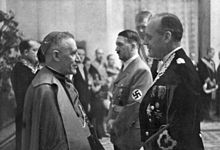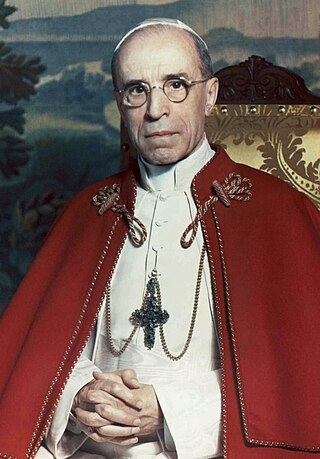
Pope Pius XII was head of the Catholic Church and sovereign of the Vatican City State from 2 March 1939 until his death in October 1958. Before his election to the papacy, he served as secretary of the Department of Extraordinary Ecclesiastical Affairs, papal nuncio to Germany, and Cardinal Secretary of State, in which capacity he worked to conclude treaties with various European and Latin American nations, including the Reichskonkordat treaty with the German Reich.

Giovanni Lajolo is an Italian cardinal and former president of the Pontifical Commission for Vatican City State and president of the Governatorate of Vatican City State.

Aloisius Joseph Muench was an American prelate of the Roman Catholic Church. He served as Bishop of Fargo from 1935 to 1959, and as Apostolic Nuncio to Germany from 1951 to 1959. He was elevated to the cardinalate in 1959.

Francesco Marchetti Selvaggiani was an Italian Catholic prelate who served as Secretary of the Congregation for the Propagation of the Faith, Vicar General of His Holiness, Secretary of the Holy Office, and Dean of the College of Cardinals. He was elevated to the cardinalate in 1930.

Pascalina Lehnert, born Josefina Lehnert, was a German religious sister who served as Pope Pius XII's housekeeper and secretary from his period as Apostolic Nuncio to Bavaria in 1917 until his death as pope in 1958. She managed the papal charity office for Pius XII from 1944 until the pontiff's death in 1958. She was a Sister of the Holy Cross Menzingen.

Ludwig Kaas was a German Roman Catholic priest and politician of the Centre Party during the Weimar Republic. He was instrumental in brokering the Reichskonkordat between the Holy See and the German Reich.

Angelo Maria Dolci was an Italian prelate of the Catholic Church who was made a cardinal in 1933. He was Bishop of Gubbio from 1900 to 1906, Archbishop of Amalfi from 1911 to 1914, and Apostolic Vicar of Constantinople from 1914 to 1922. He also served in the diplomatic corps of the Holy See as an Apostolic Delegate or Apostolic Nuncio from 1906 to 1910 and from 1914 to 1933.
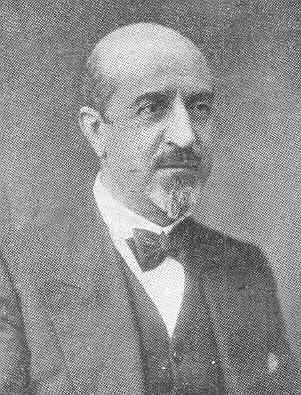
Francesco Pacelli was an Italian lawyer and the elder brother of Eugenio Pacelli, who would later become Pope Pius XII. He acted as a legal advisor to Pope Pius XI; in this capacity, he assisted Cardinal Secretary of State Pietro Gasparri in the negotiation of the Lateran Treaty, which established the independence of Vatican City.

Cesare Vincenzo Orsenigo was Apostolic Nuncio to Germany from 1930 to 1945, during the rise of Nazi Germany and World War II. Along with the German ambassador to the Vatican, Diego von Bergen and later Ernst von Weizsäcker, Orsenigo was the direct diplomatic link between Pope Pius XI and Pope Pius XII and the Nazi regime, meeting several times with Adolf Hitler directly and frequently with other high-ranking officials and diplomats.

Eugenio Pacelli was a nuncio in Munich to Bavaria from 23 April 1917 to 23 June 1920. As there was no nuncio to Prussia or Germany at the time, Pacelli was, for all practical purposes, the nuncio to all of the German Empire.

Foreign relations of Pope Pius XII extended to most of Europe and a few states outside Europe. Pius XII was pope from 1939 to 1958, during World War II and the beginning of the Cold War.

Formal diplomatic relations between the Holy See and the current Federal Republic of Germany date to the 1951 and the end of the Allied occupation. Historically the Vatican has carried out foreign relations through nuncios, beginning with the Apostolic Nuncio to Cologne and the Apostolic Nuncio to Austria. Following the dissolution of the Holy Roman Empire and the Congress of Vienna, an Apostolic Nuncio to Bavaria replaced that of Cologne and that mission remained in Munich through several governments. From 1920 the Bavarian mission existed alongside the Apostolic Nuncio to Germany in Berlin, with which it was merged in 1934.
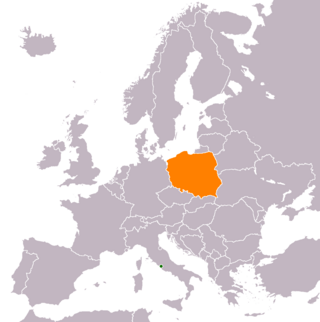
Holy See–Poland relations are foreign relations between the Holy See and the Republic of Poland. As of 2015, approximately 92.9 percent of Poles belong to the Catholic Church.
The Apostolic Nunciature to Cologne was an ecclesiastical office of the Roman Catholic Church established in 1584. The nuncios were accredited to the Archbishop-Electorates of Cologne, Mainz and Trier. It was a diplomatic post of the Holy See, whose representative was called the Apostolic Nuncio at Cologne, one of the states of the Holy Roman Empire. The office of the nunciature was located in Cologne until 1795, when France occupied the city. The last nuncio, officiating until 1804, resided in Augsburg, while the Archbishop-Electorate had been dissolved in 1803.
The Apostolic Nunciature to Bavaria was an ecclesiastical office of the Roman Catholic Church in Bavaria. It was a diplomatic post of the Holy See, whose representative was called the Apostolic Nuncio to Bavaria, a state – consecutively during the nunciature's existence – of the Holy Roman Empire, of its own sovereignty, and then of Imperial, Weimar and finally Nazi Germany. The office of the nunciature was located in Munich from 1785 to 1936. Prior to this, there was one nunciature in the Holy Roman Empire, which was the nunciature in Cologne, accredited to the Archbishop-Electorates of Cologne, Mainz and Trier.

Nikola Eterović is a Croatian prelate of the Catholic Church who has been a titular archbishop and the Apostolic Nuncio to Germany since 2013.
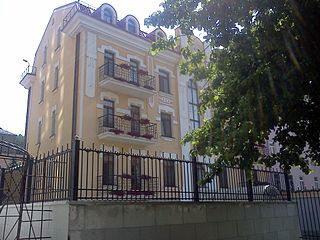
The Apostolic Nunciature to Ukraine the diplomatic mission of the Holy See to Ukraine. It is located in Kyiv. The current Apostolic Nuncio is Archbishop Visvaldas Kulbokas, who was named to the position by Pope Francis on 15 June 2021.
The Apostolic Nunciature to Prussia provided representation on behalf of the Holy See to the Free State of Prussia. It was based in Berlin.
Alberto Vassallo di Torregrossa was an Italian prelate and church diplomat. He was the last papal nuncio to Munich.
Luigi Centoz, also known as Louis Centoz, was an Italian prelate of the Catholic Church who spent more than five decades in the diplomatic service of the Holy See, either in Rome or serving in offices abroad. He became an archbishop in 1932 and served as an Apostolic Nuncio from then until 1962. He was Vice Camerlengo of the Holy Roman Church from 1962 to 1969.




